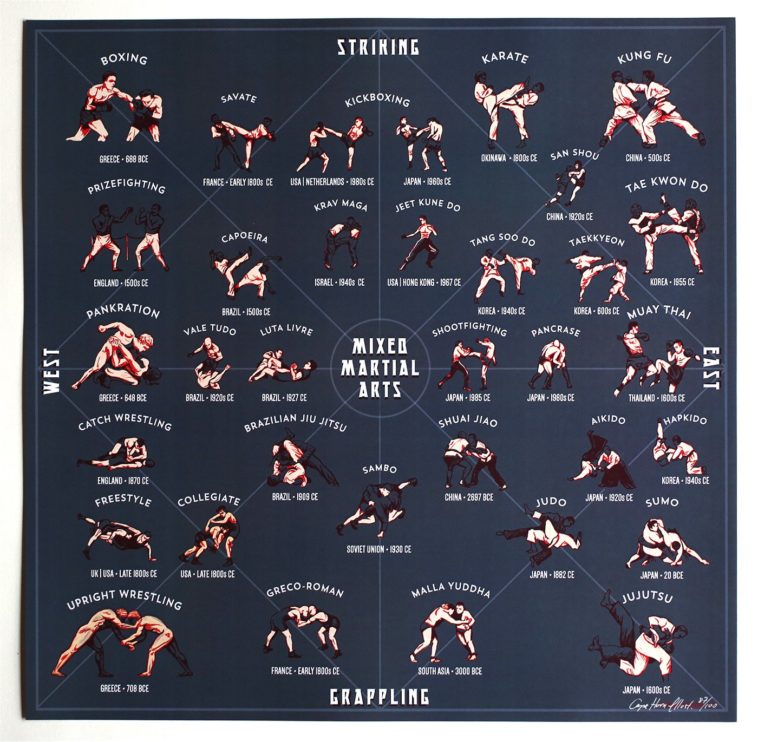A Historical Introduction And Development Of Martial Arts Around The World
A Historical Introduction And Development Of Martial Arts Around The World
Blog Article
Uploaded By-Mortensen Graham
Martial arts have an interesting background that extends centuries and continents. You could find it intriguing exactly how ancient techniques like Shuai Jiao and Kalaripayattu prepared for contemporary fight methods. These disciplines not only stress physical abilities however additionally mirror the cultures that birthed them. As you explore their development, think about just how globalization has changed these typical kinds into crossbreed styles. What impacts do you assume have formed today's martial arts landscape?
Ancient Martial arts: The Structures of Combat
As you explore the world of old martial arts, you'll find the abundant foundations that shaped battle techniques across societies. Very early methods concentrated on Self-Defense and survival, usually including strikes, grappling, and weapons.
In ancient China, for instance, techniques like Shuai Jiao highlighted tosses and joint locks, while India's Kalaripayattu showcased agility and fluid motion. Japanese samurai developed Kenjutsu, a polished swordsmanship that highlighted discipline and method.
These martial arts served not just for battle yet additionally as a way of individual development, instilling worths like regard and perseverance. The blending of these techniques over time prepared for the varied martial arts you see today, each reflecting the unique ideologies and requirements of its society.
The Cultural Impact on Martial Arts Growth
While martial arts commonly mirror the useful requirements of a culture, they also symbolize the cultural worths and beliefs of their origins. When you discover different martial arts, you'll see just how they're influenced by religious beliefs, philosophy, and social norms.
As an example, the focus on respect and self-control in Japanese martial arts comes from Zen Buddhism and samurai culture. In contrast, Brazilian Jiu-Jitsu advertises flexibility and technique, shaped by the demand for performance in a varied, modern environment.
You could find that the rituals, attires, and training techniques show a community's background and identity. By understanding these cultural impacts, you deepen your recognition of martial arts and their role in shaping human experiences across the globe.
Modern Adaptations and the Globalization of Martial arts
Martial arts have actually transformed significantly in recent years, adjusting to modern society and international impacts. You'll see that standard forms have mixed with modern techniques, creating hybrid styles like mixed martial arts. evolution martial arts accommodate varied audiences, making martial arts available and enticing globally.
With the surge of social networks and electronic systems, you can locate tutorials and competitors from all edges of the globe, damaging geographical barriers. This globalization has resulted in a shared gratitude for numerous disciplines, from Brazilian Jiu-Jitsu to Taekwondo.
As you involve with these arts, you'll understand they're not just about combat; they advertise physical fitness, self-control, and mental well-being.
Inevitably, modern-day adjustments have improved the martial arts landscape, making it a dynamic and progressing practice.
Final thought
In exploring the history and development of martial arts, you reveal an interesting mix of strategies, societies, and approaches. From https://excellentkidsonemartialar31986.dreamyblogs.com/35428139/revealing-the-spiritual-element-of-combat-sports-finding-peacefulness-within -controls like Shuai Jiao and Kalaripayattu to the modern adaptability seen in mixed martial arts, martial arts show humankind's quest for Self-Defense and individual development. As you engage with these techniques, you not only obtain skills but also a deeper recognition for the varied traditions that shape our globe today. So, continue your journey and welcome the art of fight!
